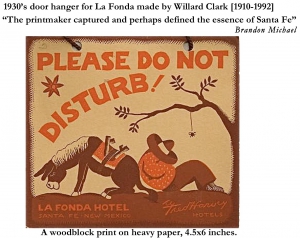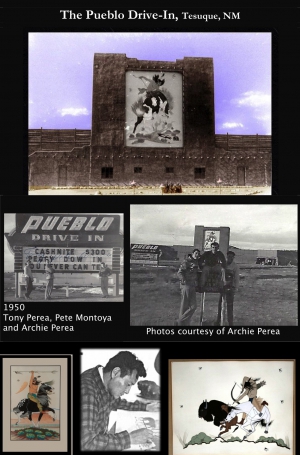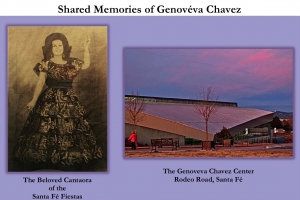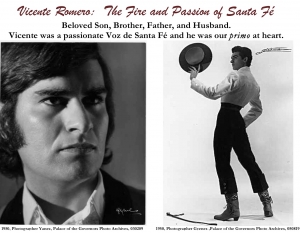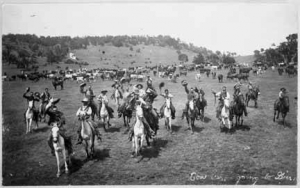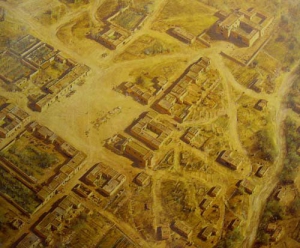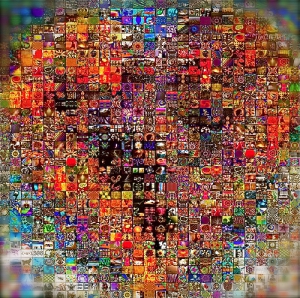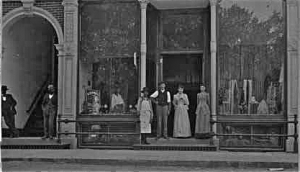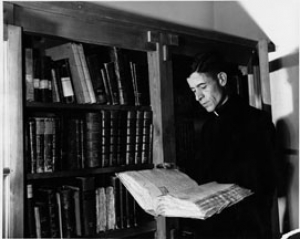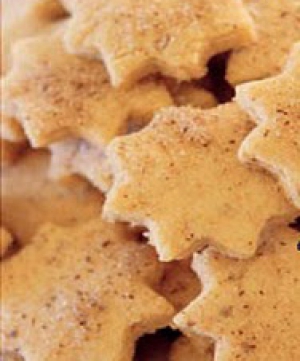
Maria Montez-Skolnik
Family
Both sides of my family trace their roots in the Santa Fé area to the 1600s. In the earlier years they were primarily farmers, builders, craftsmen, artists (wood carvers and weavers), and educators. I graduated from SFHS & NMSU and received my BA & MA in Speech & Language Pathology. I divide my time between Santa Fé and the San Francisco Bay Area.
Willard Clark (1910-1992) Printmaker Captures and Perhaps Defines the Essence of Santa Fe
SPEND ANY TIME IN SANTA FE AND YOU’RE LIKELY TO COME ACROSS THE WORK OF WILLARD CLARK. In fact his images are so ingrained in the culture of the town, his vignettes and scenes seem to be the indigenous graphic style, rather than the work of a single artist. Clark’s influence is seen everywhere in town: The unique woodcuts and etchings that still adorn local menus and advertisements throughout the city feel quintessentially “Santa Fe,” nearly 20 years after his death.
The Tesuque Pueblo Drive-In
The Tesuque Drive-In Movie Theater, Tesuque, NM
It was while at Santa Fe Indian School, Quincy Tahoma, Diné-Navajo (1920-1956) developed his unique painting style. After WWII, he established himself as a full-time artist and painted a wide variety of subject matter but was perhaps best known for his dynamic action filled paintings. His signature included a vignette, which depicted what happened after the action in the painting.
Shared Memories of Genoveva Chavez
Today, some think of Genoveva Chavez as a state-of-art recreation center. But to many others, Genoveva Chavez is an adored Santa Fé girl. For several decades, the Santa Fé Fiesta was not official until Genoveva took the microphone and, with great joy, serenaded the crowd with her heart-felt canciones. ¡Que Viva la Fiesta!
To share your memories, join in, click on an article and make your comments.
Vicente Romero: The Legacy
Mora County, New Mexico
After a hard day herding cattle, cowboys head to dinner in this 1897 photo from the Palace of the Governors Photo Archives, Neg. No. 005324.
Mora County ... The Early Years Before the Spanish conquest, Mora County was primarily Indian Country, Mora Valley having been used by the Utes, Navajos, and the Apaches. After Spanish conquest, it was primarily a travel way for Spanish explorers and was not really settled until the beginning of the 19th Century. The earliest records of Mora County come from 1817, when a group of settlers from San Juan de los Caballeros petitioned the Catholic Church. They had wanted a church to be built in Lo de Mora, the former name of Mora County.
28 September 1835 Albino Pérez, Governor of New Mexico Territory, gave over 800,000 acres of land to 25 families. "Mora" today is actually three plazas and three villages; Mora, Cleveland (originally San Antonio), and Chacon. Holman (originally Agua Negra) lies between Chacon and Cleveland. Historical and genealogical records for Mora are difficult to obtain for a number of reasons. One is that Mora was destroyed by Americans in 1848 in the course of the rebellion against the new government, and most of the archives were lost. "Not until artillery was brought up (by the United States Army) and Mora practically destroyed did the insurgents yield." A US Government Proclamation at the time (February 15, 1847) wrote that the US Army " proceeded with a body of men and one canon to Moro and razed the towns (Upper and Lower Moro) to the ground." Revolt of 1847 The Mexican War with the United States was fought between 1846 and 1848, and, following the ratification of the Treaty of Guadalupe Hidalgo, New Mexico became part of the United States. Mora was affected by the war. In 1847, Manuel Cortez and Pablo Montoya began stirring up the northern counties to revolt against the occupiers. Governor Charles Bent was assassinated in Taos on January 19, 1847. On that same day, a group of eight traders passing through Mora were murdered. On January 24, 1847, a band of American volunteers headed from Las Vagas to Mora planning to exact retribution. The band lacked sufficient ammunition and powder for facing the well-defended village. Private John Hudgins described the village: ". . . about 250 or 300 yards square, with lines of adobe houses joined together except in two places which was occupied by cedar pickets eight feet high, one two-story L adobe building at the northwest angle and a wood block (house) at the southeast angle. The two-story building was pierced with loopholes for small arms and one embrasure for cannon (but no cannon) all in the upper story." The attack failed when Captain Israel Hendley, commander of the group, was killed, and the group left the area. This failed attack was followed on 1 February 1847 by another expedition under Captain Jesse I. Morin. Armed with cannon, this group succeeded in destroying the village and proceeded to burn ranches and grain fields. An eyewitness gave the following account from the vantage point of Morin's position: "As they lived all scattered in their fields, they joined together as soon as they were appraised that they would be attacked by the American soldiers, and fortified themselves with whatever kind of logs they could find ready, at the foot of the mountain on the road going from Mora to Cebolla, there they were attacked by the soldiers, who killed one of their own men, Manuel Gallegos and wounded another named Juan Guillen. After this attack the soldiers turned to the houses and destroyed them by fire before leaving the Valley." (from Jose Ramon Pacheco, The Mora, New Mexico Story.) In 1860, Mora County was established. Before this time, most of the county had been part of Taos County and San Miguel County. The new Mora County was nearly twice the size of what it is today. A process of take away was begun, and, by 1900, it had been reduced to a size only a little larger than it is now. Since then, some of the eastern county was added to Harding County.
This information is from: http://mora.nmgenweb.us/
Birds-eye view of Santa Fé 1776
......
1776
Birds-eye view of Santa Fe
painted by Wilson Hurley after a map of Joseph de Urrutia
This is what Nedra Matteucci writes of Wilson Hurley: "Wilson Hurley, a resident of New Mexico since 1935, is recognized as one of America's premier landscape painters. Working in the great American landscape tradition, he has often been compared with Albert Bierstadt, Frederick Church, and Thomas Moran, the great landscapists of the 19th century. Though honored by the comparison, Hurley creates paintings which are truly contemporary in that they combine the realistic beauty of nature with the best of 20th century technological achievement, thought and expression. Hurley is credited with bringing Western realist landscape painting to the forefront of American painting. His influence on current and future generations of artists is incalculable. His work embodies the spirit of Western individualism and presents his experience, enthusiasm and appreciation to all who see his paintings so that they, too, may understand his extraordinary perspective."
A link for Captain Jose de Urrutia: http://www.geneabios.com/urrutia.htm
THE H'ART OF SANTA FÉ AND NORTHERN NM: A DISCUSSION ON THE ART COMMUNITY
What are considered forms of Northern New Mexico art today, were originally created as functional and utilitarian pieces by the indigenous people: Pottery, baskets and weavings to name a few. Some forms of "art" were created by these same people as a reflection of their spirituality: Retablos, bultos, Kachinas, drums, etcs. As other people migrated to this intriguing frontier in the 1800s and early 1900s, incoming artists paid tribute to the environment and the culture through their own creative visions. Paintings, drawings, and photography depicting the landscapes and the vibrant communities were created, some becoming iconic pieces of the southwest. Along this same path, Zozobra was born. The internationally known Santa Fé and Northern NM area continues to draw artists and connoisseurs of art from around the world.
What Stores "Use To Be" On and Near the Santa Fé Plaza (1900s-1960s)?
What stores use to be on and near the Santa Fé plaza? Only a few are still there from the mid-to-early part of the last century: The Camera Shop across from La Fonda on San Francisco St. is one. Kaune's Grocery Store, originally on San Francisco St., later moved to two locations, one on Washington and the other on Old Santa Fé Trail, which is still there. What is the history of Santa Fé's retail stores, which were the cornerstone of the vibrant community in the early-to-mid part of the last century (1900-1960s)?
In this photo: 1900 The Catron Building on the Santa Fe Plaza. Miss Mugler's Store on the left and Mrs. Wientge's store on the right.
Palace of the Governor's Photo Archives/No Photographer Listed/Negative #003056
Fray Angelico Chavez
FRAY ANGELICO CHAVEZ PRESERVED THE HISPANO HISTORY OF NEW MEXICO; WAS ACCOMPLISHED WRITER, ARTIST AND PRIEST
Few Hispanos in New Mexico’s modern era have done more to preserve the history of the Hispano people of New Mexico than Fray Angelico Chavez, the Franciscan priest, and accomplished writer and artist. Like many Hispanos of the time, Chavez came from humble beginnings. He was born on April 10, 1910 in Wagon Mound, a small community in northeast New Mexico between Las Vegas and Raton. He was the eldest of 10 children born to the home of Fabian Chavez and Maria Nicolasa Roybal de Chavez. His baptismal name was Manuel Ezequiel Chavez, which would later change to Fray Angelico when he was at the Franciscan seminary studying for the Roman Catholic priesthood.
The Bizcochito Cookie/New Mexico's official state cookie
Sharon Niederman | For The New Mexican
Posted: Tuesday, December 16, 2008 -












